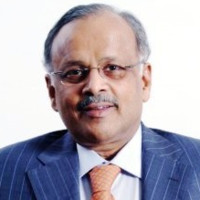Role of all stakeholders in bridging the digital divide
– Shishir Jaipuria, Chairman, Seth Anandram Jaipuria Group of Educational Institutions, Ghaziabad
 The digital divide stems from unequal access to Information and Communications Technology. It manifests itself in all sectors of the economy, particularly the education sector, where the fault-lines run along the geographic, demographic, economic and cultural disparities.
The digital divide stems from unequal access to Information and Communications Technology. It manifests itself in all sectors of the economy, particularly the education sector, where the fault-lines run along the geographic, demographic, economic and cultural disparities.
Inequity lies at the core of the digital divide. People who lack an easy and reliable access to the Internet or mobile networks are the have-nots of the digital age. They stand at the wrong end of the divide, and need to be digitally empowered for the gap to become narrow.
A recent report on a survey by National Statistical Organization (NSO) reveals the extent of the digital divide in India. As per the report, only 10% of the households in India have a computer. In the cities, 42% households have access to the internet, but this number falls to a dismal 15% in rural India, where most of the population lives.
Reasons for digital divide
- Lack of affordability and accessibility of digital tools and telecom network causes the digital divide. This discrepancy results mostly from income disparity or even geographic location.
- Countries, states and regions with poor telecom and power infrastructure lag behind in digital connectivity.
- Age, gender and cultural constraints too define the digital divide. Young people are more digitally connected than the elderly. Likewise, women lag behind men in using digital tools in some regions and cultures.
In the education sector, the implications of the digital divide became more apparent during the lockdown induced by the Covid-19 pandemic. As teaching and learning shifted online, those who were not digitally connected felt the brunt. The digital learning gap – which is the manifestation of the digital divide in education – widened. And it will remain so unless all the stakeholders play an active role in bridging this divide.
What the stakeholders need to do
Government: A visionary public policy can go a long way in bridging the digital divide. The government needs to create a sound and durable infrastructure for technology expansion throughout the country.
Industry: The industry must introduce innovations to make digital technology affordable and accessible. The Atmanirbhar Bharat initiative has already kickstarted an indigenous production of digital equipment. The industry must follow the lead and ensure greater penetration of digital tech across India.
Educators: Educators need to realign curriculum to give due weightage to the digital learning concepts in classrooms and online teaching sessions. Not just that, they should develop smart content in local languages to democratize digital knowledge.
Citizens: Citizens need to go beyond cultural constraints to embrace digital technology wholeheartedly. People of all ages, religions, ethnicities, and castes must be made aware of the benefits of being integrated with the digital revolution.
The future
The latest World Economic League Table 2021 forecasts India’s emergence as the fifth largest economy in the world by 2025, and the third largest by 2030. This great surge of India as an economic superpower must be accompanied by a narrowing digital divide. Only then can we hope for a holistic societal development and true progress.
Also read: Financial education is imperative to build an economically stronger India
The views, thoughts, and opinions expressed in the article belong solely to the author, and not necessarily reflect the views, thoughts, and opinions of EducationWorld.

















Add comment